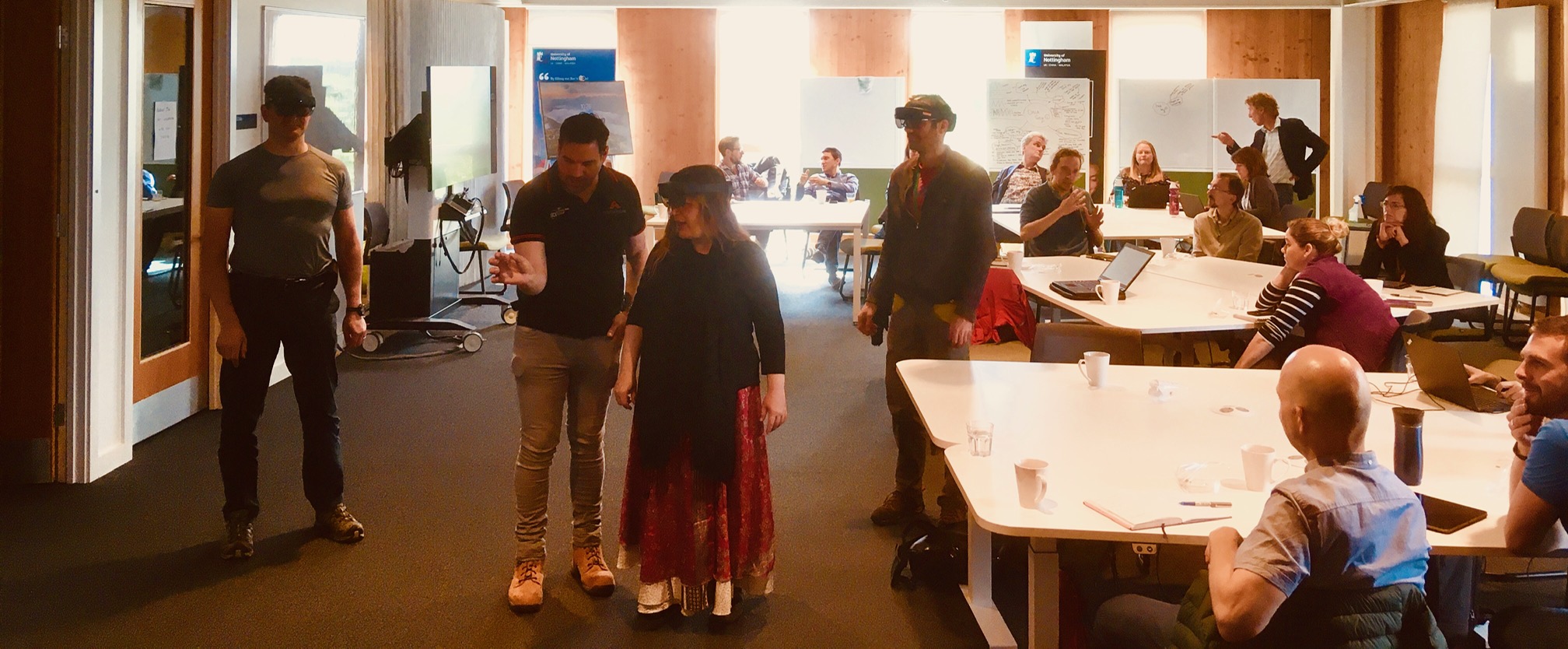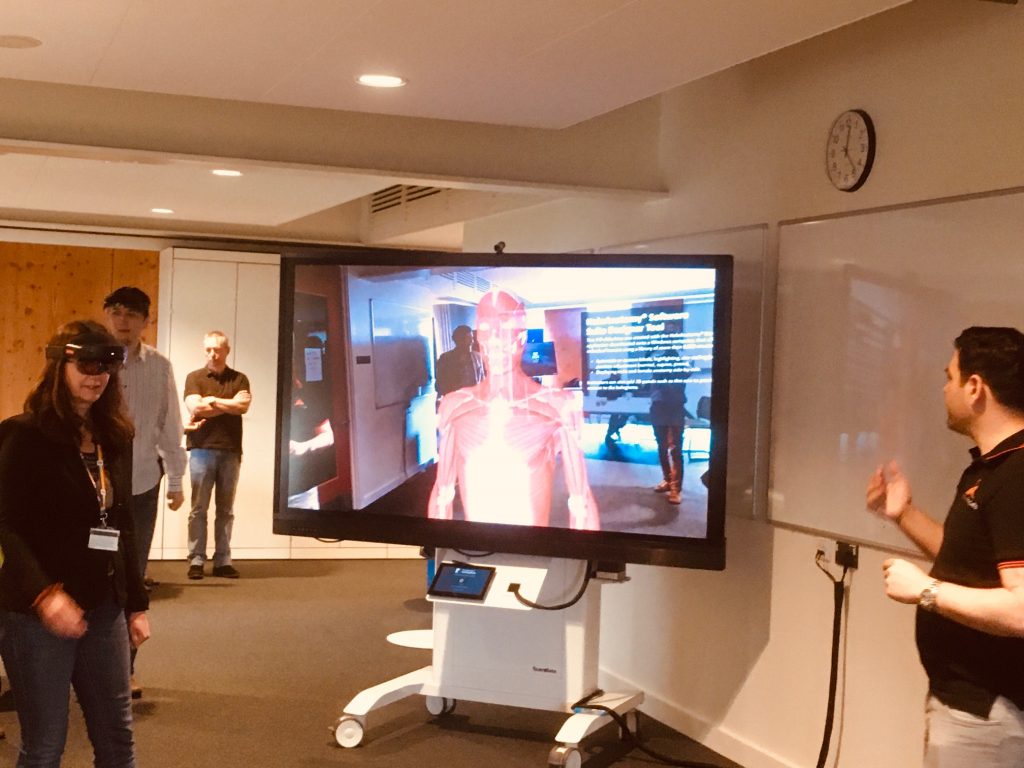May 27, 2022, by Digital Research
HoloLens 2 and research
This week, we trialled HoloLens 2 technology with colleagues from the School of Life Sciences, the Biodiscovery Institute, the School of Education, the Nanoscale & Microscale Research Centre, and the Hounsfield Facility.
The workshop was led by InterReality Labs, with support from Microsoft.

The HoloLens 2 is an untethered, wearable device that can project holographic models into the wearer’s real-world environment. This is known as augmented or mixed reality. It allows users to see digital 3D models or other artefacts before their eyes, embedded in a real-world physical environment. There are many applications. Our workshop focussed on research, collaboration, and facilities.
Research: you can use the HoloLens glasses to view 3D models in three dimensions. This is a fundamentally different experience from seeing such models on a two-dimensional screen. Users can walk around the models, view them from all angles, even walk inside them. Models can be rotated, scaled, situated in a real environment, all with a few simple hand gestures. We tried it out on a life-size model of a human skeleton and a train carriage, but any 3D model can be loaded into the device.
Collaboration: the HoloLens 2 shines when it comes to collaboration. The view through the glasses can be projected on a large screen and thus shared with other room occupants. Beyond that, it is possible to join a Teams meeting, whereby the call participants not only see the view through the HoloLens, but can also annotate this in real time. Sharing 3D models in a three-dimensional environment becomes possible with partners located anywhere in the world.
Facilities: another major application of the HoloLens is remote training. Users of complex research equipment can be guided from afar and in real time. Alternatively, expert technicians can demonstrate how to use equipment from the perspective of the user (and record this, if required). No more 100-page user documents! You can also use the HoloLens to create tours, and there is a package for making interactive mixed-reality guides.

Colleagues from across the University will now be testing the HoloLens in their respective research groups and facilities.
If you would like to try the technology or borrow a HoloLens 2, please get in touch with a member of the team!
Sorry, comments are closed!
